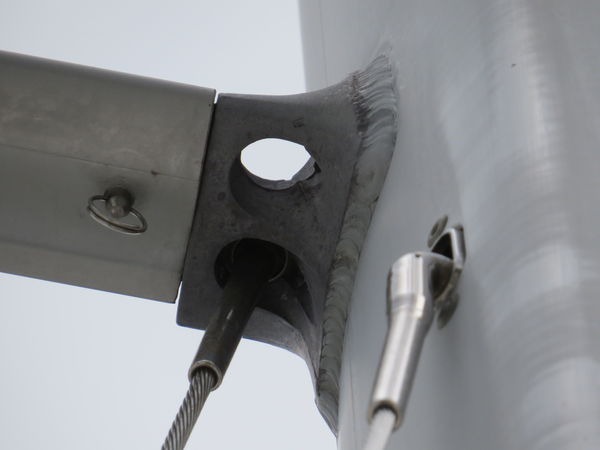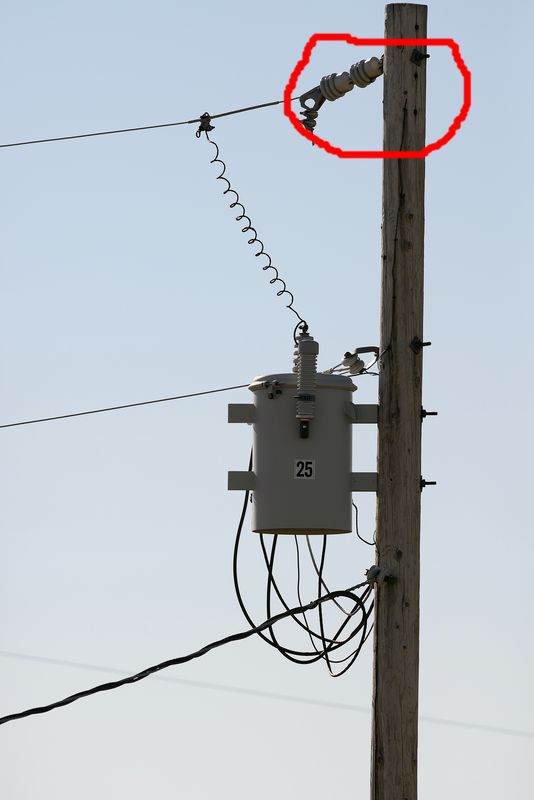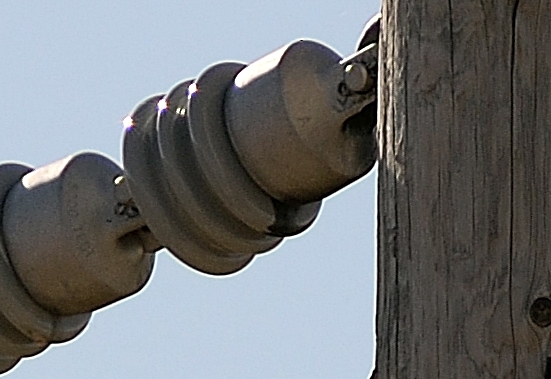Composite (fiberglass) surface inspection from a distance (400 ft)
Sep 25, 2015 10:20:41 #
From a former Quality Manager, now retired, you need to contact Canon/ Nikon industrial representative for this inquiry. They are the only ones who can adequately address you questions as to whether this is even possible with photography equipment.
Sep 25, 2015 10:36:56 #
I am sure that the new blades before they leave the manufacturing plant are thoroughly tested (visual, ultrasonic, etc.) to determine the existence of microscopic cracks. However, during operation the blade regularly bends and twists. In time some of the fibers start to break, creating small cracks and if not detected will progress to larger cracks that eventually may lead to catastrophic failure. The wind turbine blades are massive and can operate for a while with relatively visible small cracks. Conducting ultrasonic tests on an operational blade would be a very complex and expensive procedure. Yes it will discover the microscopic cracks, but the blade can still operate with those cracks. The goal of the visual inspection outlined here is to discover the cracks that in short time could lead to blade failure. Doing nothing is not really an option as the blades will sooner or later fail with dire consequences.
OK I agree, taking a picture of a moving blade may not work. What I am proposing is to conduct periodic visual inspections via photography coupled with manual inspection (ultrasonic, etc.) executed by an operator using ropes and pulleys. A small UAV will be too unstable and uncontrollable as it will be continuously buffeted by the turbulent currents and eddies around the blade and the tower.
OK I agree, taking a picture of a moving blade may not work. What I am proposing is to conduct periodic visual inspections via photography coupled with manual inspection (ultrasonic, etc.) executed by an operator using ropes and pulleys. A small UAV will be too unstable and uncontrollable as it will be continuously buffeted by the turbulent currents and eddies around the blade and the tower.
Sep 25, 2015 10:40:36 #
ballsafire
Loc: Lafayette, Louisiana
pfranke wrote: Anyway, sorry for the rambling, probably if these things are protected from people (meaning reduced safety issues), the other approach is to just let them fall apart and replace them after they break.
Sep 25, 2015 10:41:38 #
also, why the 400 feet?
Perhaps have photographer in little box raised high and close (like they use for electrical repair).. With big light and stopped turbine.
Perhaps have photographer in little box raised high and close (like they use for electrical repair).. With big light and stopped turbine.
Sep 25, 2015 10:42:38 #
At this time I am at very early stages of investigating the possible use of photography for this purpose. As I go deeper into it I agree I will contact the manufacturers representatives and ask for their advice.
Sep 25, 2015 10:45:54 #
MT Shooter wrote:
If one's needs are not so extreme, a bridge (superzoom) camera will do the job nicely. This is a picture of sailboat rigging I took 40 feet above on a boat I am buying. I used a canon SX50HS handheld to get the shot. The boat was bobbing slightly. had I used the new Nikon p900 on a tripod, I could have gotten a lot closer and clearerYou will need a VERY expensive lens. I recommend a 600mm F4, or an 800mm F5.6 on a very high quality Crop sensor camera body to get the resolution you are seeking.

Sep 25, 2015 10:46:09 #
That's the way is being done now. However, it is dangerous and time consuming. Trying to find a solution that will reduce the man in the box frequency of inspections.
Sep 25, 2015 10:49:40 #
I suspect that a wind turbine with 75' blades rotating at a tip speed of 200 MPH would probably need only have one blade develop a minor stress fracture to self destruct the entire rotating section. You could then inspect the rest of the blades, perhaps in pieces, on the ground or workbench.
Sep 25, 2015 10:50:39 #
Placing the camera at 400 ft. was to try to capture the entire blade in a frame. We can place the camera closer and photograph the blade in sections.
Sep 25, 2015 10:54:04 #
Nicolae wrote:
That's the way is being done now. However, it is dangerous and time consuming. Trying to find a solution that will reduce the man in the box frequency of inspections.
permanently mount an inexpensive camera to the infrastructure and take pictures remotely when needed and transfer data wirelessly to a hard disk in a box at the base that can be picked up.. Camera, lens, and wired flash sit in a box mounted where images can be taken as needed. Box needs protection against elements and opens and closes as part of the picture taking... A little stupid perhaps, but the point is that the monitoring has to become part of (integrated into) a given turbine.
Sep 25, 2015 11:08:29 #
The rotor is supposed to stop if an out of limit imbalance occurs. If it does not stop then the entire turbine and part of the tower may crush to the ground. That was the case of wind turbine in Denmark. The blades are extremely heavy. A three blade rotor could weigh 60-100 tones.
Sep 25, 2015 11:24:41 #
Nicolae wrote:
Placing the camera at 400 ft. was to try to capture the entire blade in a frame. We can place the camera closer and photograph the blade in sections.
I found this on the internet:
'The widely used GE 1.5-megawatt model, for example, consists of 116-ft blades atop a 212-ft tower for a total height of 328 feet. The blades sweep a vertical airspace of just under an acre.'
It sounds like you can get a lot closer. I took this shot at around 160 -170 feet this morning, choosing once again to photograph in the shadows for worst case scenario. This time I used my full frame D610 camera instead of my crop sensor camera and my 500mm f/4P lens without a teleconverter. The second shot is cropped to the red outlined area in the original shot. But this won't compare to trying to capture a moving target.
Sep 25, 2015 11:33:27 #
The turbines are stopped when they are not required to provide energy, usually at night, when the wind is below 2 m/s and above 25 m/s. Taking the pictures on a rotating blade may not produce the results I want. Taking the pictures of a stationary blade will be the way to go. We will move the camera to take pictures on all surfaces (top, bottom, leading edge, trailing edge). Defects may develop after long periods of operation. A stationary camera will not do.
Sep 25, 2015 11:36:20 #
jr48001
Loc: Algonac, MI
I've been in photogrammetry for over 40 years and believe that you must establish your priorities. Your distance and dimensional tolerance are not compatible with a fast moving object. Lasers measuring time of flight will not satisfy your accuracy needs. Operating the DJI drone with a hi-res camera in GPS mode will afford some stability in moderate conditions others may be able to provide accommodations knowing the precise environmental constraints that you can provide (these are software fixes).
Is it possible to build strain gauges into the blade?
Is it possible to build strain gauges into the blade?
Sep 25, 2015 11:36:42 #
There are quite a few mechanical factors involved. What is the shape of the member that us to be monitored. Is it load-bearing. Are stress patterns and/or crack initiator/nucleation factors important. If the latter, I would guess that no camera/lens could meet the resolution necessary. I gather the member's service is in a remote area, like 20 stories up; have you investigated other remote stress/crack monitoring techniques.
If you want to reply, then register here. Registration is free and your account is created instantly, so you can post right away.






